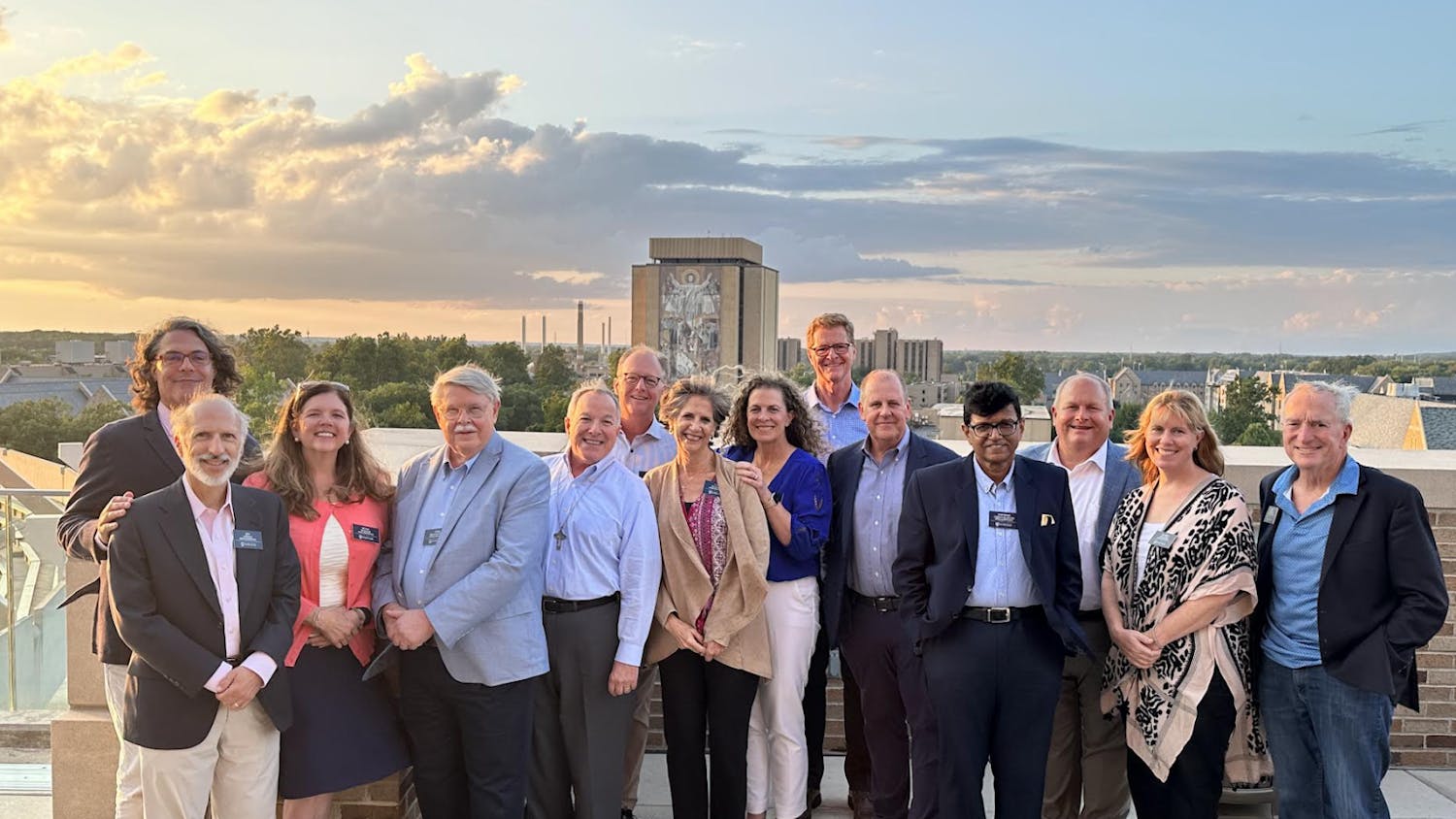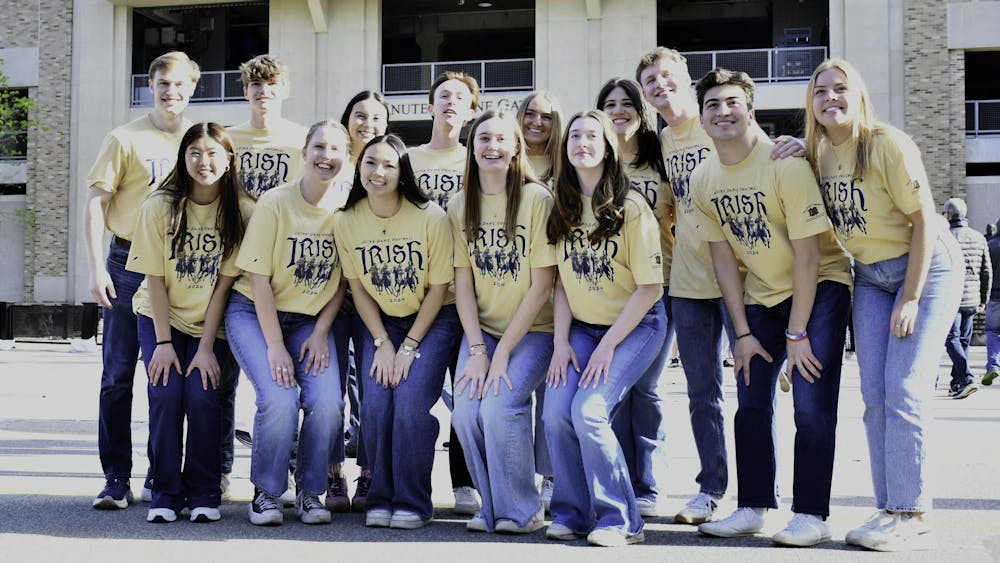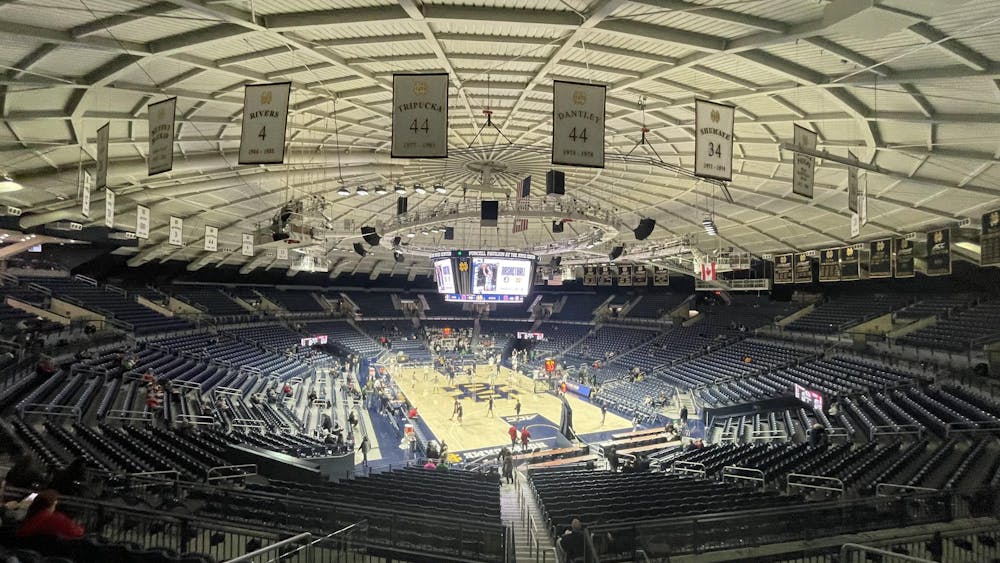On the seventh floor of the Hesburgh Library, students can access resources from one of the most well known medieval institutes in North America — Notre Dame’s own Medieval Institute.
“Notre Dame has resources for undergraduate education that almost nobody else has,” Thomas Burman, the Robert Conway Director of the Medieval Institute, said. “And those resources start as they always do in the world — with people. We have something like 80 faculty members who, in one way or the other, are involved in scholarship on the Middle Ages.”
Over 40 of those faculty members are medieval studies fellows, Burman said.
“ … A very large department in the humanities at most universities would have 40 or 45 faculty, so [for example] our history department has 45 faculty,” Burman said. “That kind of spans the globe in a lot of ways. It’s like we have a department of just medieval studies, so that gives you a sense of how vast the range of faculty expertise is.”
Burman said another one of the Medieval Institute’s best resources is its library.
“Often, people come from Europe to use our library and they say it’s the best library they’ve ever used to do medieval research,” he said. “It’s not just that we have a great collection of books and all that. We have some other remarkable things — like what’s called the Ambrosiana [Library] microfilm collection. ”
The Ambrosiana microfilm collection was a project headed by University President Emeritus Fr. Theodore Hesburgh, Canon Astrik L. Gabriel — who was one of the Medieval Institute’s founders — and Cardinal Giovanni Montini, who would later become Pope Paul VI. The three had seen the destruction of medieval manuscripts during the world wars and wanted to preserve them, Linda Major, Medieval Studies director of undergraduate studies, said.
“Notre Dame made arrangements when Fr. Hesburgh was still young in his presidency to try to preserve, or have a back up of, or preservation of all the Medieval manuscripts that were in the Ambrosiana library in Milan, Italy,” Major said.
The Medieval Institute is also known for its facsimiles, including a facsimile of the Book of Kells, Major said.
“A facsimile is a replica of a Medieval manuscript, down to the tiniest detail,” she said. “They’re only produced in quantities of a couple hundred and then sold throughout the world, so they’re very rare and they’re generally very expensive, but Notre Dame has about 800 facsimiles.”
One of the Institute’s most underutilized resources, however, is its classes, Major said.
“We offer so many different classes,” she said. “A lot of times some classes won’t have any students registered at all because they’re not in the main stream of the courses that we’re known for — history, philosophy, theology, art — and they might be more peripheral, and students don’t think to take them when in fact they can be the more exciting ones.”
The Medieval Institute offers several opportunities for students to study the Middle Ages, including a major and supplementary major, a minor and a Ph.D. program. Students also have the opportunity to participate in summer internships in Rare Books and Special Collections, The Snite Museum of Art, the archives and the Medieval Institute.
Undergraduates in the Medieval Studies program are also given preference in the study abroad program at the University of St. Andrews in Scotland, which was started by the Medieval Institute, Major said.
Pursuing a major in Medieval Studies allows students to pursue a number of academic interests within a single subject, Major said, as Medieval Studies classes draw from 13 different departments. It is also a prestigious program, Major said — a Medieval Studies Honors student was the first Notre Dame undergraduate to win a Gates Cambridge Scholarship.
“We often times offer classes that sound similar to the Program of Liberal Studies and in the same format, but the big difference is they have their program very structured and laid out in sequence,” she said. “We’re just the opposite. We let students decide on what their concentration is.”
This major can be “a hard sell” to parents, though, due to misconceptions about the Middle Ages, Major said.
“They don’t want to spend all that money to have their child end up with a degree in something they equate with knights and damsels in distress — which of course, it’s a lot more than that,” she said. “But it’s known probably by its reputation in popular culture, rather than as a scholarly discipline.”
Burman echoed Major, and said there are many misconceptions about the Middle Ages in popular culture, even though both universities and representative assemblies were invented during this time period.
“The most striking [misconception] that seems impossible to root out is that the Middle Ages is this backwards period and all of the interesting stuff in Western culture comes either from the ancient or the period after the Renaissance and all of that,” he said. “In this case, I would simply stress that some of the most fundamental institutions of the modern, Western world are inventions not of the ancient period or the Renaissance, but of the Middle Ages.”













